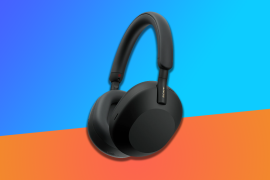Apple MacBook Air M3 (2024) review: the best ultraportable laptop out there
The MacBook Air gets a bump to intergalactic processing speeds with Apple’s newest M3 chip. Is that enough to hold the interest?
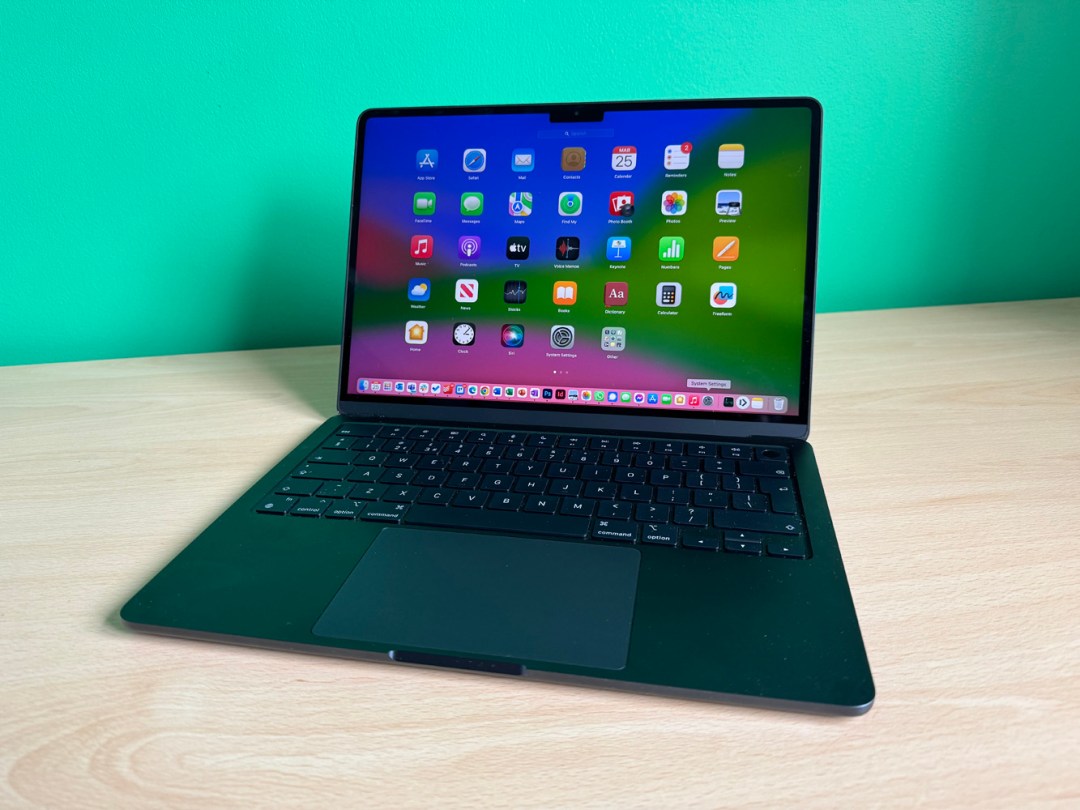
Stuff Verdict
Yes, the best everyday ultraportable is now even better – the gauntlet has been laid down for Intel laptops again.
Pros
- Beautifully designed
- Super light
- Superb keyboard
Cons
- Upgrades can be very expensive
- Very similar to the M2 Air
- Jury’s still out on the screen notch
Introduction
Looking for a MacBook Air M3 review? You’re in the right place. Apple has been blurring the lines between MacBook Air and Pro premium laptops since the former cast off its old wedge shape in 2022. Then last year the 13in Air was joined by a 15in version… and now Apple has upgraded both to the newer M3 chip, along with a sprinkling of other changes.
It’s still way cheaper than the MacBook Pro… but with the M2 Air now available for under a grand, does it make sense to go with the MacBook Air M3?
One thing to bear in mind while you’re totting up your options is memory: 8GB of RAM is specified on all base-spec Airs. That’s fine for everyday purposes, but if you’re going to be using any kind of pro-level software for photo or video work then I think you need 16GB (I’m using nearly 14GB as I write this review).
On test here is the 16GB+512GB model, which is a big slice more than standard at $1499/£1499. If you’re thinking about a 15-incher, that brings a $200/£200 premium over the 13in equivalents. Here’s how I got on with the MacBook Air M3…
How we test laptops
Every laptop reviewed on Stuff is used as our main device throughout the testing process. We use industry-standard benchmarks and tests, as well as our own years of experience, to judge general performance, battery life, display and sound quality. Manufacturers have no visibility on reviews before they appear online, and we never accept payment to feature products.
Find out more about how we test and rate products.
Design, build, and screen
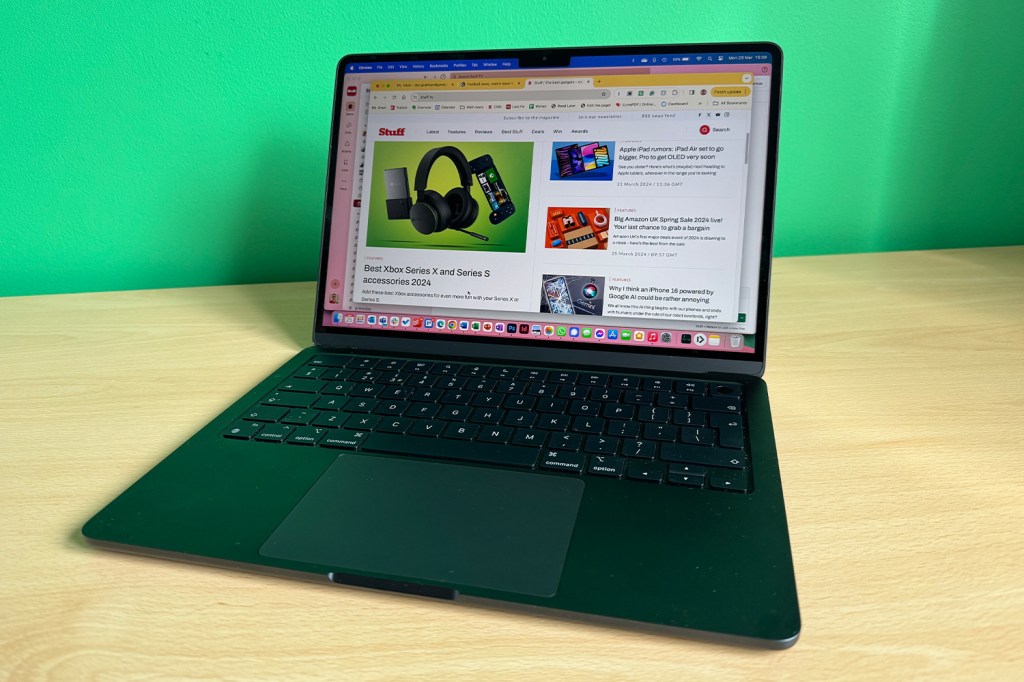
The design of the Macbook Air M3 hasn’t changed from the M2 version, but that doesn’t change the fact that it’s one of the thinnest laptops you can get. It’s sleek, but not showy. At 1.24kg it’s around 400g lighter than my MacBook Pro, which is very noticeable indeed. As for the almost-black Midnight finish: I’m a fan. I’ve also been playing with the Starlight 15in version, which is a great second choice. The other options are classic Silver and the less compelling Space Grey.
On the connectivity front, the Air once again has two Thunderbolt USB-C ports… and once again they’re both on the left. I’d really like it if Apple would provide an option on the right, but I guess the answer there is to go Pro if you really need it. Thankfully, the keyboard is as great to type on as ever.
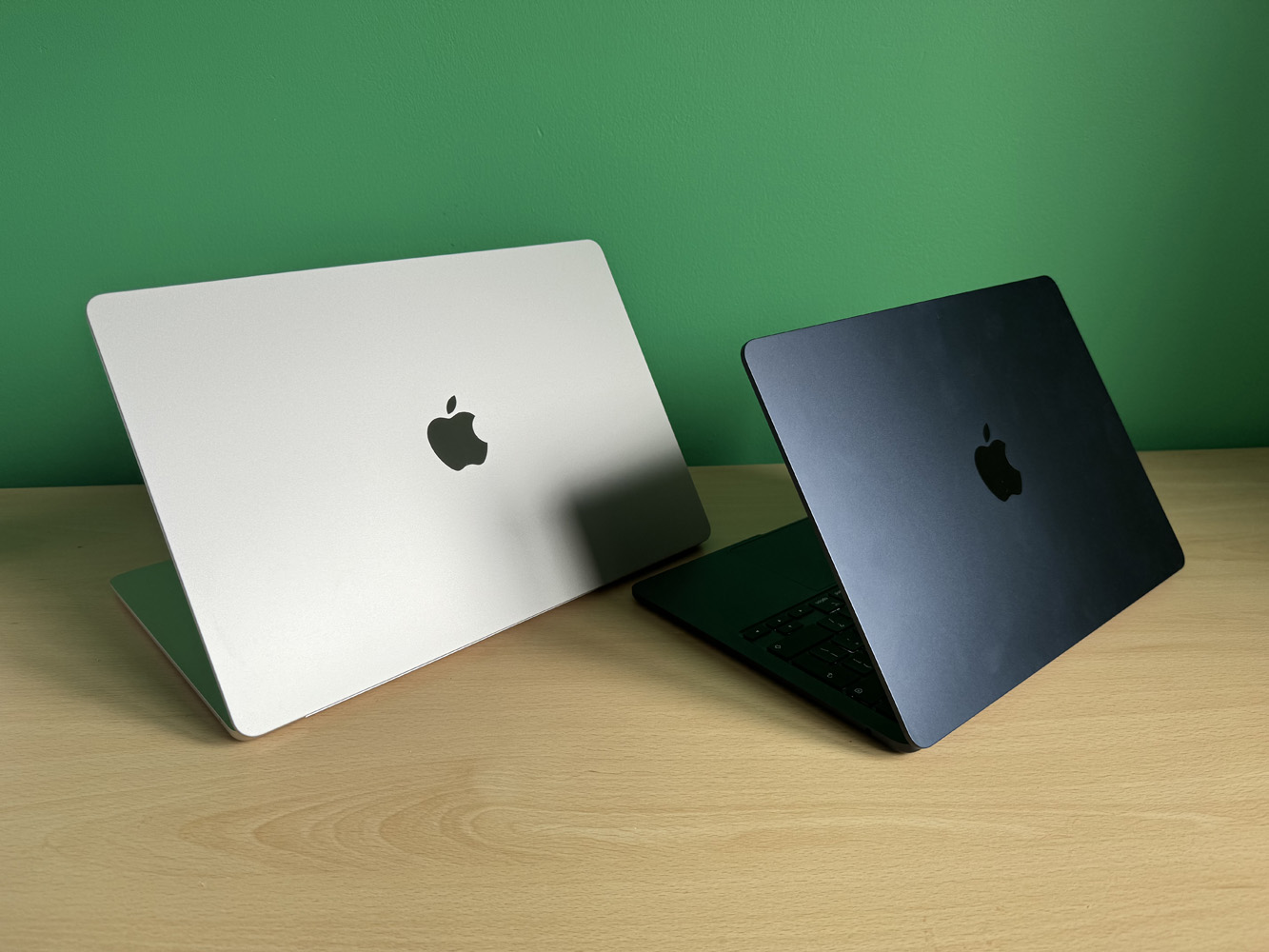
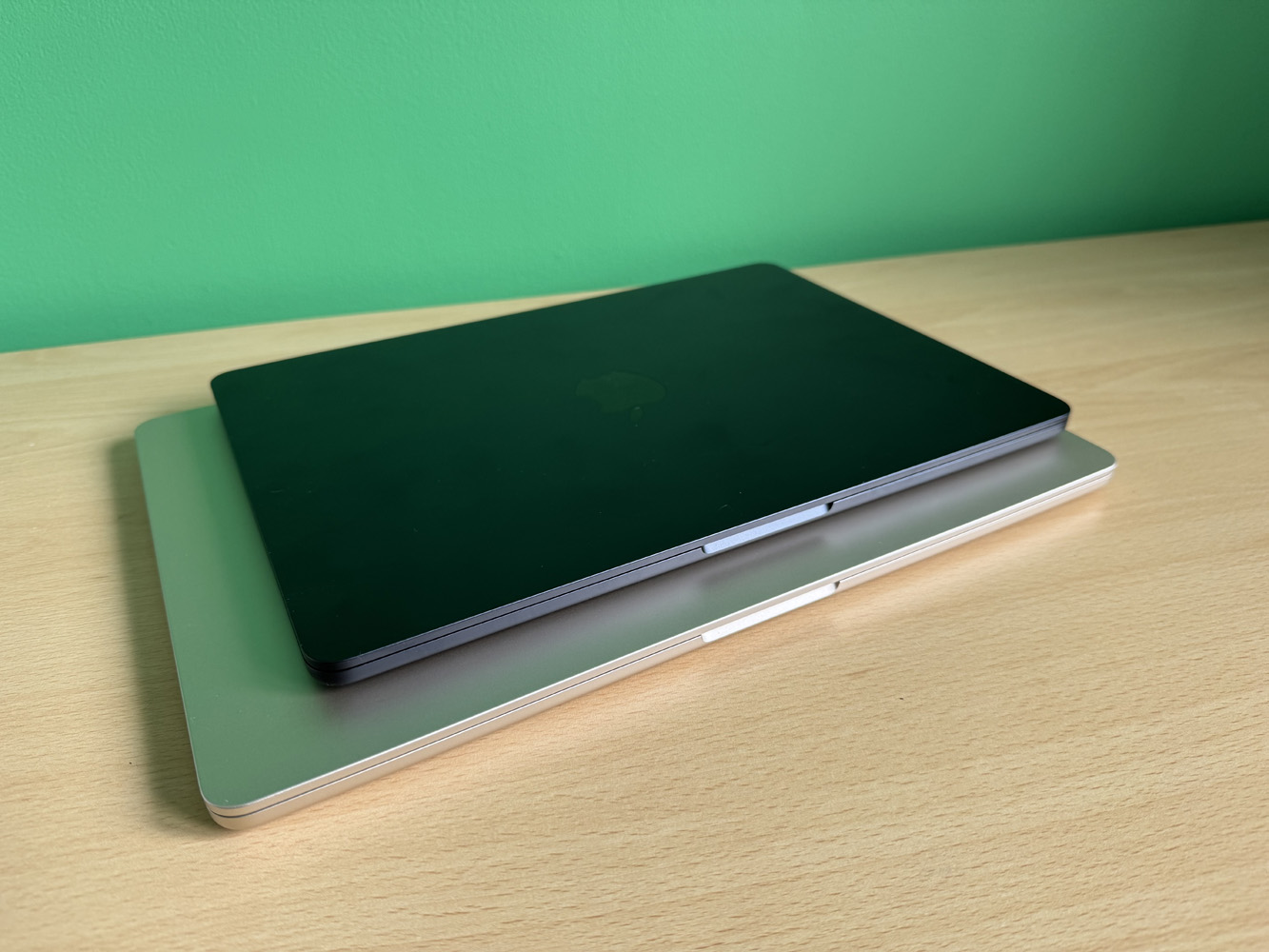
As for the 13.6in LED display, it’s one of the best around, with 224ppi and 500 nits of brightness, though it lags behind the superior mini-LED displays on the MacBook Pro lineup. The bezels are noticeably thicker as well, and the jury’s still out on the screen notch. If you struggle with screen space on an ultraportable, the 15in version is superb – but you’ll need to make sure your backpack has room.
Power, performance, and battery life
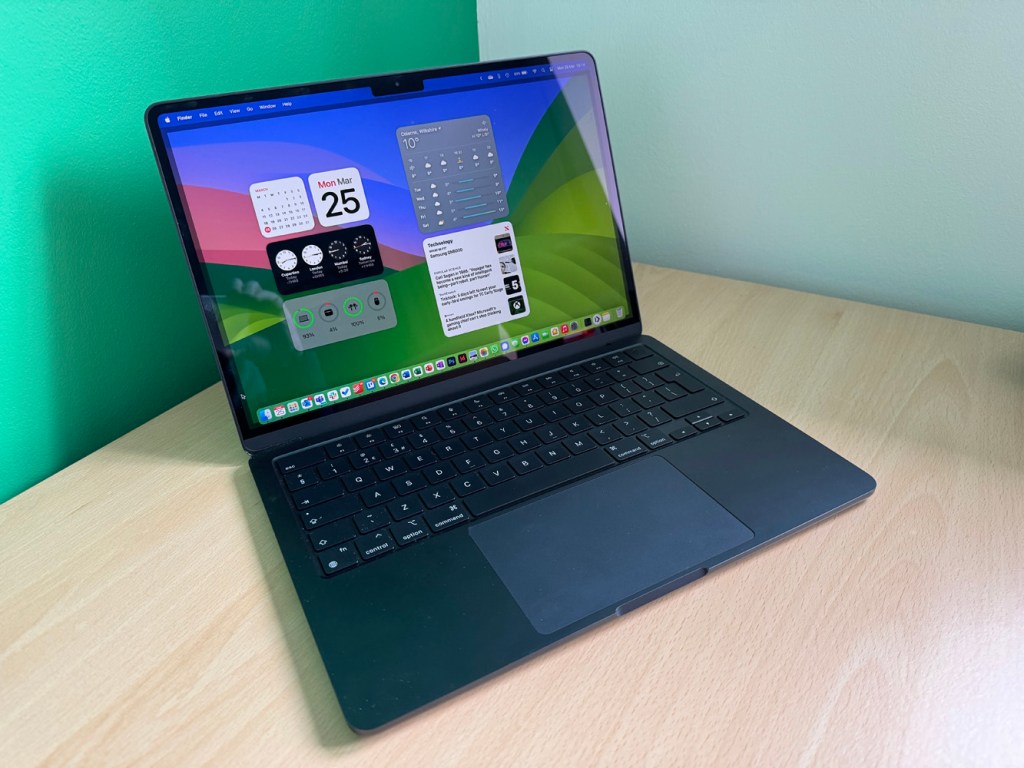
At surface level, there isn’t a massive amount changed about the M3 Air. That chip is clearly a key difference, but performance isn’t improved a massive amount: benchmarks indicate around a 15-20% uplift in multi-core oomph, which is nice to have rather than being a must-have. The inclusion of slightly faster Wi-Fi 6E is also welcome.
The M3’s graphics, however, are greatly improved over the M2: by around 40%, with framerates in some games up by more. Apple likes to talk about gaming with things like this, but the real boon for many Mac users will be the boost to performance in premium video and photo editing apps. Another big headline around this model has been the ability to support two displays, something the Air M1 and M2 couldn’t do. The only snag is that, if you connect two external screens, you need to close the lid to make both work.
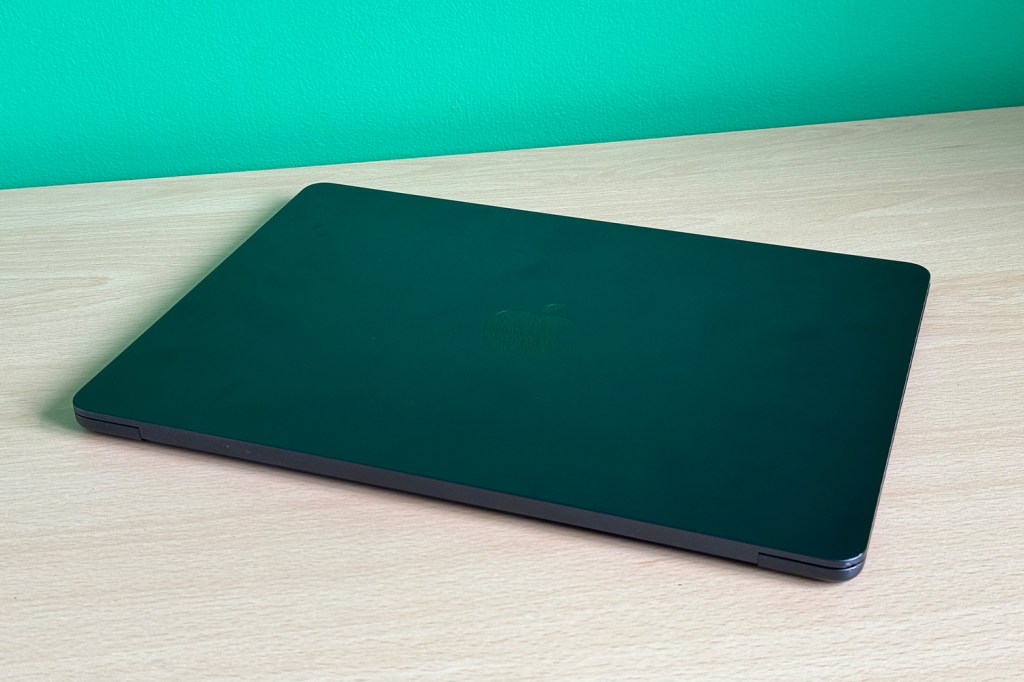
One other thing that has sped up is the storage. With the M1 and M2 Airs the SSD was a little slow – seems like a small thing,
but it did dent performance, and Apple has fixed that with the M3. Put simply, instead of being one block of storage it’s now two working in tandem.
If you’ve been following the Mac market since the switch from Intel, you’ll also know that Apple’s own chips are super-efficient. You’re talking 14-15hrs for intensive use, and looping a video shows an overall life of around 20hrs. That’s pretty amazing for such a small but capable device.
MacBook Air M3: verdict
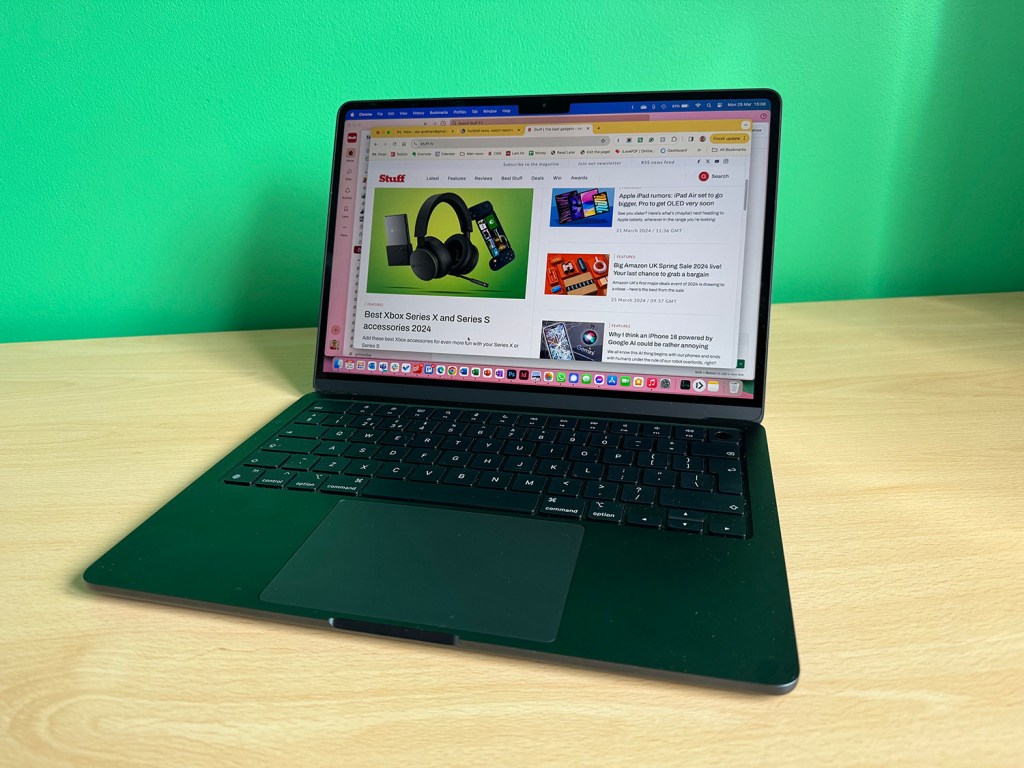
The M3-powered MacBook Air takes things on a step again. And while Intel-based Windows ultraportables are improving all the time, they can’t match the performance and battery life on show here. Still, the M2 Air remains the elephant in the room. As it’s now available from £999, it’s a stunning option for the price – is it enough for you?
Stuff Says…
Yes, the best everyday ultraportable is now even better – the gauntlet has been laid down for Intel laptops again.
Pros
Beautifully designed
Super light
Superb keyboard
Cons
Upgrades can be very expensive
Very similar to the M2 Air
Jury’s still out on the screen notch
Apple MacBook Air 13in M3 tech specs
| Screen | 13.6in 2560×1664 60Hz LED |
| Processor | Apple M3 |
| RAM | 8GB/16GB/24GB |
| Storage | 256GB/512GB/1TB/2TB SSD |
| OS | macOS Sonoma |
| Connectivity | Wi-Fi 6E, Bluetooth 5.3, 3.5mm, 2x Thunderbolt 4/USB-C, MagSafe 3 |
| Dimensions | 304x215x11.3mm, 1.24kg |




